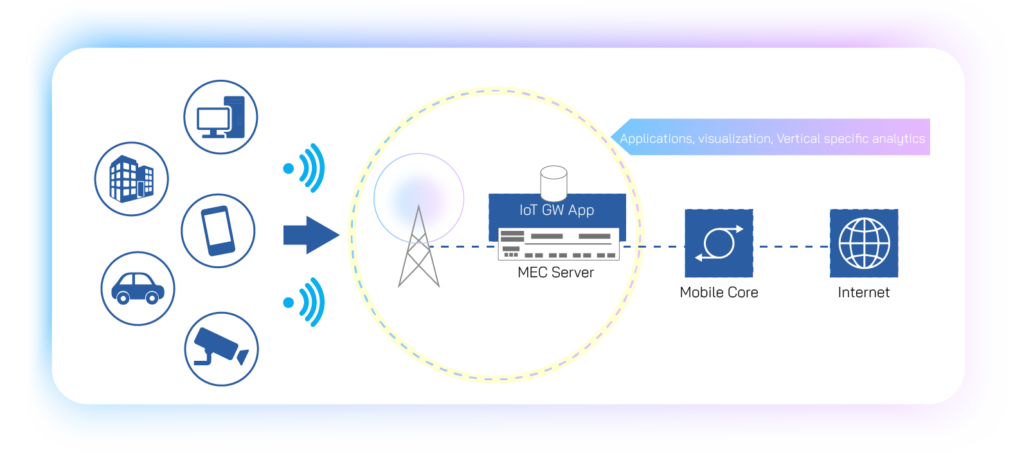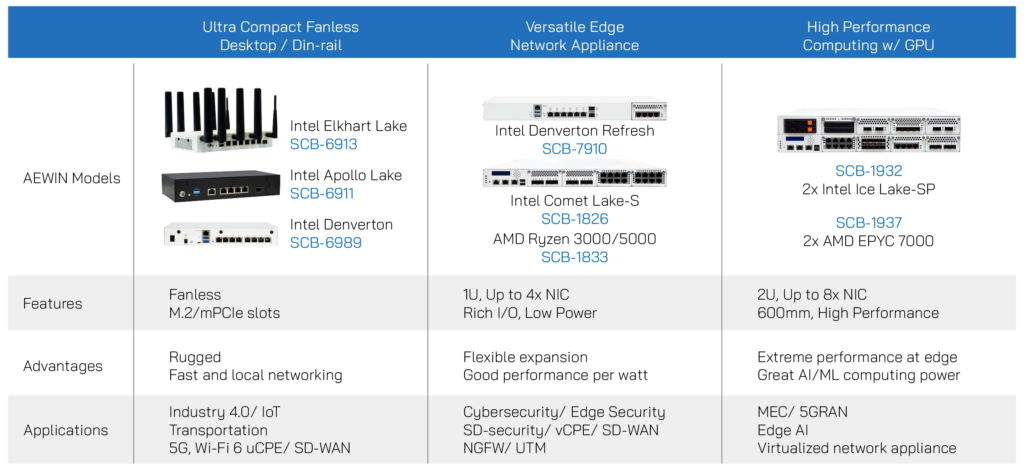Background
The demands of edge computing come from that the computing required to be closer to the location generating the data/information to have better efficiency and faster speed. Back in 2015, the following image was displayed in a white paper of Multi-access Edge Computing published by ETSI. It shows that there are demands of MEC server at the edge cloud of mobile communication ecosystem.

Application
As the development of 5G with features of wider bandwidth, lower latency, and more devices connected, MEC applications has been dramatically raised everywhere from consumer, commercial to industrial. Take smart manufacturing as an example, real-time inspection integrated with intelligent robot for smart control can help to increase the productivity/quality and even lower the cost at the same time. In addition, the cyber security can be enhanced by processing the confidential data on site before uploading to the cloud..

With the implementation of IVA and autopilot-positioning, autonomous cars, intelligent public transportation, and other kinds of vehicles including industrial ones such as smart tractors for agriculture are developed full of vitality. Moreover, the high-speed intelligent video analytics can also benefit for traffic monitoring of smart city and patient security of healthcare.
To accomplish real-time processing and inference, up-to-date technology rises in the fast-evolving 5G ecosystem.
Technology
IEEE 1588 PTP
Time synchronization is one of the significant factors in 5G transmission as wireless base stations require a stable frequency/phase reference. IEEE1588 is commonly used nowadays. It defines PTP, Precision Time Protocol, to cover the shortages of NTP (Network Time Protocol) and GPS with higher accuracy in time synchronization to achieve the needs from diverse industries.
Intel® eASICTM with FlexRAN
Another key point in 5G physical layer (L1) transmission is FEC, Forward Error Correction. Combining the Intel® eASICTM technology and FlexRAN, 5G layer-1 transmission can be tremendously improved based on FEC acceleration and lead to more possibility to accomplish further real-time applications.
Hardware Design
For edge computing server, short depth is required for being deployed in any locations while high performance of CPU/GPU processing is also vital as real-time analysis/operation at edge is crucial to new-developed applications in the evolved ecosystem. To achieve the compact size without compromising the performance, reliability, and scalability, the system design needs to be considered thoroughly with years of experiences on electrical, thermal, and insights of the market.
AEWIN Offerings
From ultra-compact fanless computers to versatile edge network appliances to high performance computing, AEWIN designs the platforms wisely with years of experiences to fulfill a variety of market requirements. We provide featured products based on wide-range of CPUs from both Intel and AMD for various applications including 5G Open-RAN, SD-WAN, Edge AI, and further virtualized network solutions. Please find further information in the following table.

To know more, please don’t hesitate to contact AEWIN friendly sales!
– SCB-6989: Denverton Platform with 8 GbE ports, 3x mini-PCIe, and QAT.
– SCB-6911: Apollo Lake Platform with 5x GbE ports (4x RJ45 + 1x Fiber) and 1x RJ45 Console port.
– SCB-6913: Elkhart Lake Platform with 6x RJ45 GbE ports and 3x M.2 (w/ 4x SIM) for 5G/WIFI.
– SCB-7910: Denverton Refresh Platform with 6x 1GbE RJ45, 2x 10GbE SFP+, and QAT.
– SCB-1826: Comet Lake/Rocket Lake/Xeon W Platform with 4x PCIe NIC and IPMI/TSB module.
– SCB-1833: Ryzen Platform with 4x PCIe NIC and IPMI/TSB module.
– SCB-1932: Dual Ice Lake-SP Platform with short depth design, dual FHFL GPU slots + 4x PCIe Gen4 NIC, and IPMI.
– SCB-1937: Dual EPYC-7000 Platform with short depth design, dual FHFL GPU slots + 4x PCIe4 Gen NIC, and IPMI.